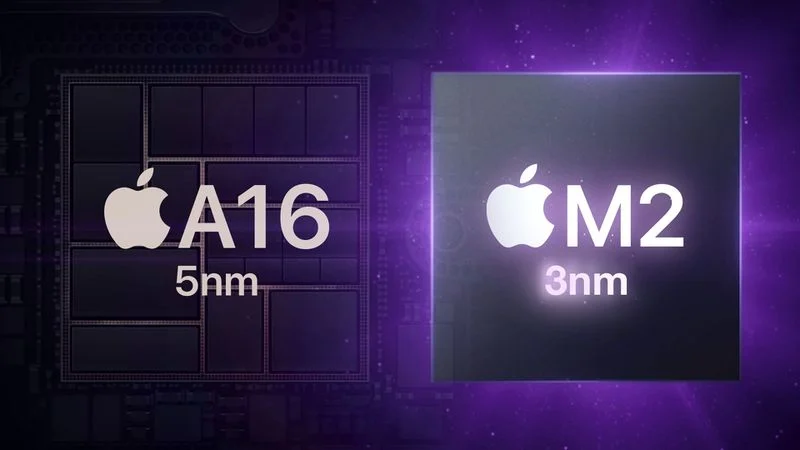It is reported that the "a16" chip used for iPhone will be manufactured by the same 5nm process as the A15 bionic of iPhone 13, and Apple will leave a greater performance leap to the "M2" chip designed for its next generation Mac. At the same time, according to the leaker known as "shrimpapplepro", the company is developing a "final" M1 chip variant, using the more powerful kernel in A15.

In a twitter tweet, shrimpapplepro shared information from "a fairly reliable source" that allegedly revealed Apple The upcoming chip plans for a16 and M2 chips, as well as the "final" variant of M1 series chips.
It is reported that a16 will be based on TSMC's 5nm process, just like A14, A15 and M1 chips. In previous reports, it was unclear whether a16 would be manufactured by TSMC's more advanced 4nm process. An ambiguous report by DIGITIMES said that Apple planned to use TSMC's 4nm n4p process - but n4p is actually an enhanced version and third generation of the 5nm process. On the other hand, shrimpapplepro said that a16 will use TSMC's n5p process. This indicates that the substantive upgrade of a16 may not be as big as previously thought.
According to this information, the improvement of a16 will come from a small increase in CPU, GPU and memory, which also confirms the report of guomingxuan, an analyst at Tianfeng securities, who said that a16 will adopt lpddr 5 memory in particular. Lpddr 5 memory ratio iphone Lpddr 4x memory in 13 and iPhone 13 Pro matched with a15 chip is 1.5 times faster and saves 30% power.
M2 chip will obviously be the first apple chip upgraded to TSMC's 3nm process, and completely skip the 4nm process. M2 is considered to be Apple's first customized armv9 processor.
It is said that apple is still developing the "final SOC of M1 series", which is characterized by the upgrade of kernel structure. M1, M1 pro, M1 max, and M1 ultra chips use energy-saving "icestorm" cores and high-performance "firestorm" cores - just like A14 bionic chips. It is said that the last M1 variant of Apple will be based on A15 bionic chip and replaced with "blizzard" energy-saving core and "avalanche" high-performance core.
The last chip of this M1 series may be in the next generation mac pro Provided in, apple clearly predicted this earlier this year. At present, Apple's most powerful chip is M1 ultra, which is actually a stacked version of M1 max, with 20 core CPUs and 64 core GPUs. With the launch of the first Mac Pro based on Apple silicon, it is believed that apple is developing a more powerful chip than M1 Ultra. M1 ultra in MAC studio has stronger performance than 28w Intel Xeon chip, so Mac Pro will need to have more extreme progress in performance.
In addition, if not for Mac Pro, this new chip may be a variant of the standard M1 chip. Guo said earlier this year that the 2022 model year macbook The air will retain the M1 chip instead of the M2. Therefore, the rumors about shrimpapplepro may be related to the entry-level M1, rather than the top M1 variant in the apple silicon version of Mac Pro. Providing a device with a standard M1 chip iteration can help Apple buy time before releasing a Mac with an M2 chip.
According to other reports, the a16 chip will appear exclusively in the iPhone 14 pro and iPhone 14 Pro max, while the iPhone 14 and iPhone 14 Max insist on using the A15 bionic chip of the iPhone 13. Most of the M2 chips are rumoured to be launched with the redesigned MacBook Air later this year, and then spread to a new wave of Macs and possible next-generation ipad Pro.
Shrimpapplepro is uncertain about the final naming of "a16", "M2" and the final M1 chip variant, and said that it should be cautious about this rumor.